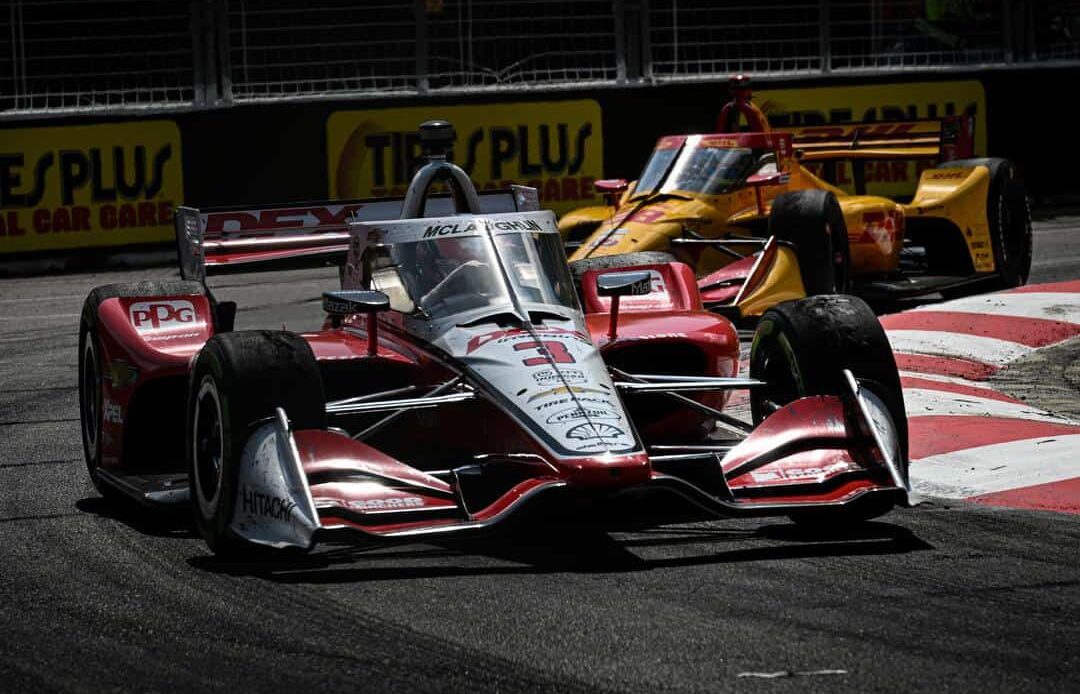Many fans recall the introduction of the drag reduction system (DRS) to Formula 1 in 2011.
In a bid to increase on-track overtaking in the series, the 2011 season saw a new feature wherein, after the completion of two laps of green flag racing, drivers within a second of the car ahead of them could, at the press of a button, trigger and opening in their rear wing and greatly reduce the aerodynamic drag of their vehicle.
As a result, each track featured at least one zone (straightaways or corners which were essentially deformed straightaways) where the driver could, having met the conditions above, open their rear wing and greatly increase their straight-line speed in an attempt to pass the car ahead.
Some of us might not recall, however, that IndyCar implemented a driver control intended to increase on-track overtakes two years earlier.
First introduced in 2009, IndyCar’s push-to-pass system allows a driver, after two laps of green flag racing, to apply a roughly 60 horsepower boost to their engine’s power output. Adopted from a similar mechanic that made its debut in the Champ Car Series in 2004, drivers are budgeted between 150 and 200 seconds of extra power per race, to “on the button” at their discretion to either attempt a pass, defend from a car behind, or even increase their lap times.
These 200 seconds of extra power can be activated for up to 20 seconds at a time, giving drivers a minimum of 10 power deliveries per race. Wherein DRS remains available for F1 drivers from lap 3 onward – assuming no safety car period or… red flag… comes along to break up the flow of the race, IndyCar drivers must budget their allotted push-to-pass throughout the course of an entire race.
This fact gives rise, with lovely frequency, to situations where two equal cars find themselves battling for the win in the waning stages of an event, with the car in front having little to no push-to-pass remaining while the car behind is free to attack sometimes as often as every single lap until the checkered flag.
Further, while DRS is an aerodynamic mechanism in nature, push-to-pass comes with car management implications by virtue of being a component of engine performance. Each activation of push-to-pass burns extra fuel, meaning that teams, at times, have to instruct their drivers to refrain from activating push-to-pass due to concerns about the car making its way to the next pit stop if not the end of the…
Click Here to Read the Full Original Article at …

